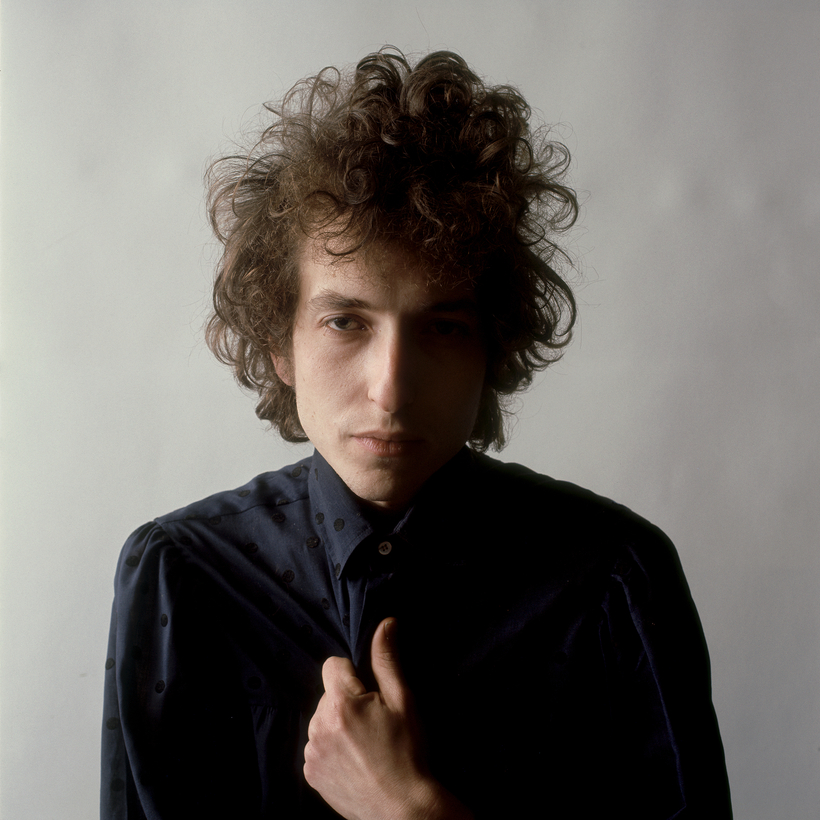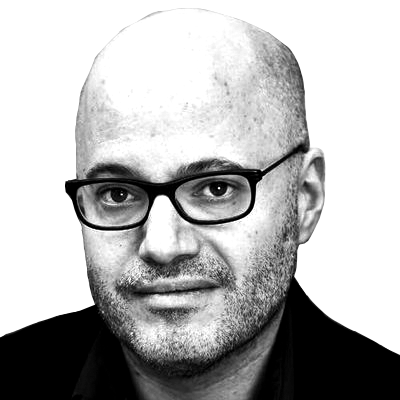“Inside the museum, infinity goes up on trial,” sang Bob Dylan in 1966. It took a while, but here we are.
In the 60s, Dylan didn’t like being called the voice of his generation, but it stuck. In 2023, Dylan is a catalogue sold to Universal for $300 million. He is a brand of whiskey and a Broadway musical. He has been played by Heath Ledger and Cate Blanchett, and, in an upcoming biopic, he will get the full Chalamet. He is an 82-year-old man who still tours the world for an audience that scrutinizes every change in the setlist. (Lately he’s been covering the Grateful Dead’s “Truckin’” and Chuck Berry’s “Nadine.”) He is a friend of Jimmy Carter’s and has been honored by Clinton and Obama.
Name an award, and he has probably hauled it in—from Grammy to Oscar to Golden Globe to Pulitzer. Oh, and he got a Nobel Prize in Literature in 2016, and when he had Patti Smith accept it for him, she was so overwhelmed she had trouble getting through “A Hard Rain’s A-Gonna Fall.” (Patti, we feel you.)

Dylan has had trouble handling the acclaim. When he received the Tom Paine Award, in 1963, he said, shortly after the Kennedy assassination, that he saw himself in Lee Harvey Oswald. When he received a Lifetime Achievement Grammy at 50—presented by an intense Jack Nicholson—he had a “pump don’t work ’cause the vandals took the handle” moment: he mumbled something for a few seconds, then forgot what he was saying, mumbled a little more, something about God believing in your ability to mend your own ways, as if he thought he had landed at a recovery meeting, and walked away to a baffled world. Even when he got the Nobel, he responded with a speech quoting SparkNotes.
“When I Paint My Masterpiece” was a sweet idea when he wrote it, but so many agree that the m-word is for real. What was whimsy is now fate, and Dylan has been playing the song constantly lately, with revised lyrics on his 2021 album Shadow Kingdom and thereafter, as if, in his weird way, he had finally lived it out.
The Bob Dylan Bootleg Series, a project that began in 1991, now has 17 volumes. If there is a period of Dylan you find to be mid, the series will elucidate how a song with dated production was better than you thought. Dig into the vault and you’ll find “Blind Willie McTell” or “Making a Liar out of Me” and marvel that he deemed them not ready for prime time. Or you can now have a variorum of versions of “Mississippi,” and you can’t believe you could live with just one.

Dylan has usually endured all of this in a cloud of mystery, a rolling stone. It’s not dark yet. He will keep being Bob Dylan as long as he can, but he has left the business of figuring it out to the rest of us. “If I wasn’t Bob Dylan,” he said, “I’d probably think that Bob Dylan has a lot of answers myself.”
Oh, and Bob Dylan got a Nobel Prize in Literature, and when he had Patti Smith accept it for him, she was so overwhelmed she had trouble getting through “A Hard Rain’s A-Gonna Fall.” (Patti, we feel you.)
But now being inside the museum isn’t just a metaphor. Most artists become an archive after they’re off in Desolation Row. Dylan still tours, brands, licenses, but a building in Tulsa, across the street from the Woody Guthrie Center, is the Bob Dylan Center. It is holding 100,000 documents acquired by the George Kaiser Family Foundation in 2016, and, at this point, the cash was raised, the architect was hired, the ground was broken.
Every museum needs a big, fat book, the kind that dominates a table, the kind that does not come cheap. Bob Dylan: Mixing Up the Medicine, written and edited by Mark Davidson and Parker Fishel, is a chronological tour, with essays, documents, and photographs, and even if you are a stone-cold Dylanite, there are discoveries.

There are two 1968 letters on orange paper, from George Harrison, who calls him “Bobbie”: “Thank you and Sarah [sic] and the children for being so good to us in Woodstock. It was really beautiful being with you and I hope we shall meet sometime again in this incarnation.” The other letter was concerned with a song called “Thingymubob,” a collaboration that would eventually become “I’d Have You Anytime,” on Harrison’s first solo album, All Things Must Pass (1970).
There are many handwritten lyrics, and look—he crosses things out and changes his mind, just like the rest of us. On notebook paper, there are the lyrics to “Tangled Up in Blue” still tangled up in yellow. Before he “reckoned to try my luck,” he meets his “Cousin Chuck” (Cousin Chuck does not make it into the song), who’s the one who got him a job “in an airplane plant loading cargo onto a truck.” So much is crossed out, and some ideas never make their way. Some ideas are worth seeing through, others abandoned. Dylan continued changing the lyrics in live performances. “Tangled Up in Blue,” one of his greatest songs was, for its maker, a perennial rough draft. Watch this one while you can—it won’t stay still for you.
In an essay from the book on “Dirge,” from Planet Waves, Raymond Foye writes that Leonard Cohen—yes, that Leonard Cohen—was originally name-checked. “Leonard Cohen, he talks of train depots and man forever stripped / Playing out his folly while his back is whipped.” Did Cohen know about it? Who knows? It would have eased the pain a little, or he might have been melancholic, languishing on the cutting room floor.
Dylan has usually endured all of this in a cloud of mystery, a rolling stone. It’s not dark yet.
The New Yorker music critic Alex Ross also unearths missing lyrics and a mysterious quest with his essay on “The Groom’s Still Waiting at the Altar,” a song that was originally a B-side, then included on the 1981 Shot of Love CD, one of those “How could you miss it?” best-kept secrets. Ross and I could both notice that the song was transposed from A minor to B-flat minor. “Even if Dylan is destined to sing the song no more, he is still turning over its tumultuous energy in his mind, seeking the perfect snapshot of spiritual chaos.”
With her inimitable elegance, Amanda Petrusich, also a New Yorker music critic, takes on Dylan’s opaque, stream-of-consciousness novel Tarantula, dismissed by nearly everyone when it came out. She now has the perspective of time, and all the extra drafts and errata at the Dylan Center, and concludes that “it is as deep a piece of literature as anything he wrote.”
Even if Dylan is not always about euphony or lucidity, you can reach a point where you accept Dylan exactly as he is. The more ragged or raspy or broken, the more it speaks to you. Live long enough, and you will have survived something.

“Well, I try my best to be just like I am / But everybody wants you to be just like them.” That never goes away. Hearing Dylan singing it, exactly the way he sings it, helps you get through like nothing else. The more you get your ass kicked by life, the more that voice gives you exactly what you need. When you are staring into the abyss and take no comfort that it stares back at you, there is Bob Dylan on your streaming service with more than 1,000 variations.
Life stopped making sense a long time ago. Sometimes, all you can do is endure. And that voice is exactly what you need. It helps that it’s not always pretty. It helps that there are multiple meanings in his songs. It helps that he won’t explain. The pain, the mystery, the snarl, the growl—if you get Bob Dylan, he will give you what you need.
There were times that Dylan got booed for playing with the Band, for a bad sound system, for breaking with the flock. There were times when he disappointed critics and fans, who revered the earlier incarnations. But now there is a brick-and-mortar tribute in the center of the dust bowl, brimming with lyrics and letters and rough drafts and secrets. Bob Dylan still lives and tours and continues to be a moving target.
The Dylanologists used to dig through his garbage. Now anyone can make an appointment and dig through his curated detritus. The building will outlast the man, though we don’t even want to think about it—that’s what a museum is for.

Back in 1965, Dylan sang, “But I mean no harm nor put fault / On anyone that lives in a vault.”As of now, Bob Dylan the man does not live in a vault. He’s still on the road, headin’ to another joint. The mystery tramp evades. It ain’t me, babe, he tells us. Whoever it was left a hell of a trail.
Twenty years ago, I was in Dallas, where I grew up, and I saw Dylan in a small theater. I was at the foot of the stage. I couldn’t believe that the 61-year-old man in front of me was the same guy who wrote those songs that seemed like scripture. He wasn’t, but he was. He kept re-writing himself in real time, showing us how it was done. He was no human jukebox, no nostalgia act. He was whatever that moment was for a one-nighter. And he was off to the next gig, in Austin, the next night. A bunch of the Bob Cats—the Deadheads for Bob—wanted me to come along. I considered throwing it all away for Bob Dylan, but good sense prevailed.
Now, there’s another way. Make an appointment and lose yourself in the archive. Or just pick up this book. The years will go by. Bob won’t be here forever. But he will be preserved. Life is rough, the draft is even rougher. The world will continue going wrong, but open Mixing Up the Medicine, flip through the pages. Being a museum has its advantages. You get to have professionals curate the most responsible sections and exegetes to pass it on, and you don’t have to say a word. Choose among his several hundred tracks. Put on a long playlist. You may have had a really rough day, or an unending series of them. Look under your boot soles. Bob Dylan will be waiting for you.
By the way, the book has two pages on “When I Paint My Masterpiece,” including a 2020 interview on the song, after that Nobel business. He’s still a work in progress. “Even if you do paint your masterpiece, what will you do then? Well, obviously you have to paint another masterpiece.”

Bob Dylan: Mixing Up the Medicine, edited by Mark Davidson and Parker Fishel, will be published on October 24 by Callaway
David Yaffe is a professor of humanities at Syracuse University. He writes about music and is the author, most recently, of Reckless Daughter: A Portrait of Joni Mitchell. You can read his Substack here


